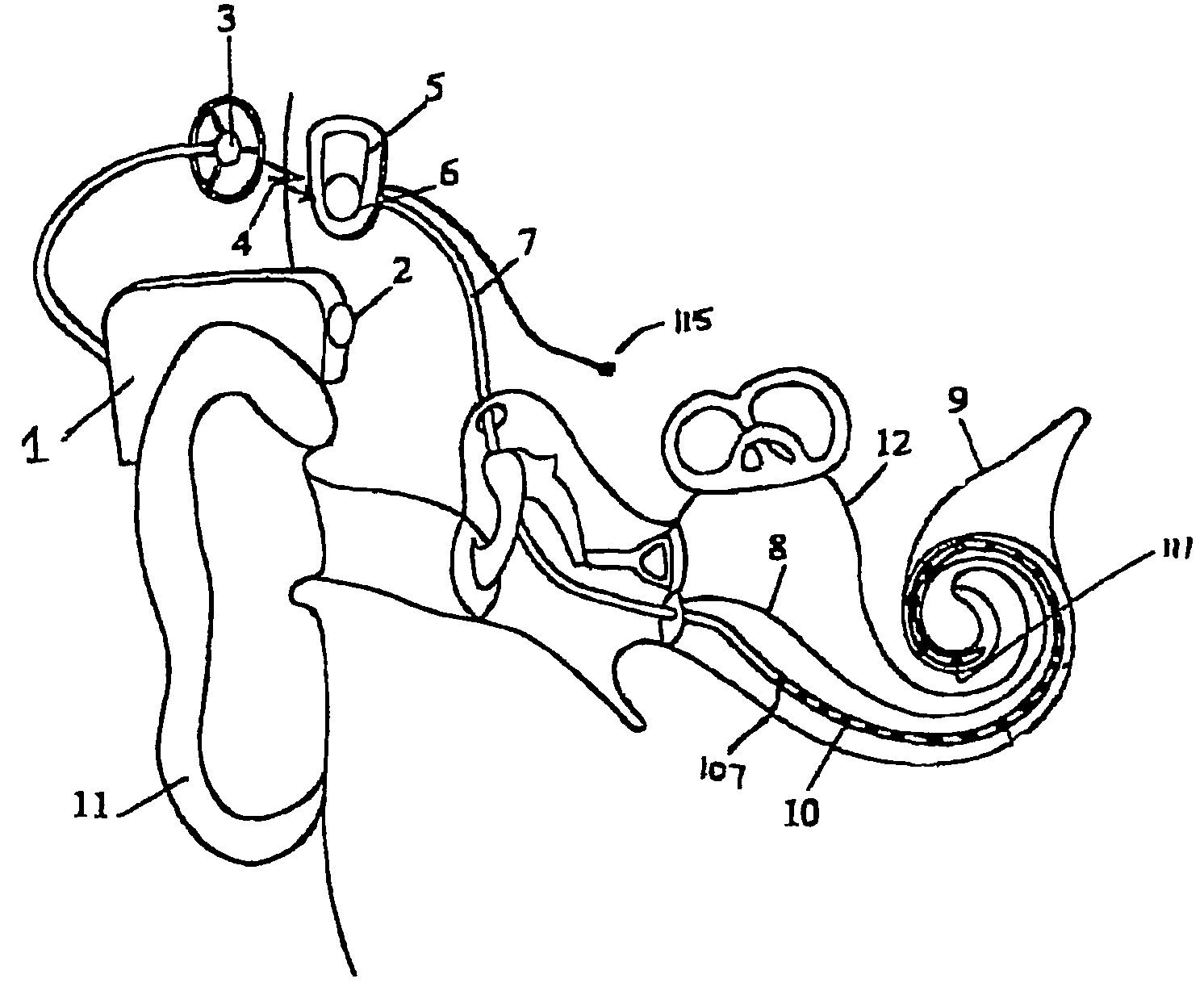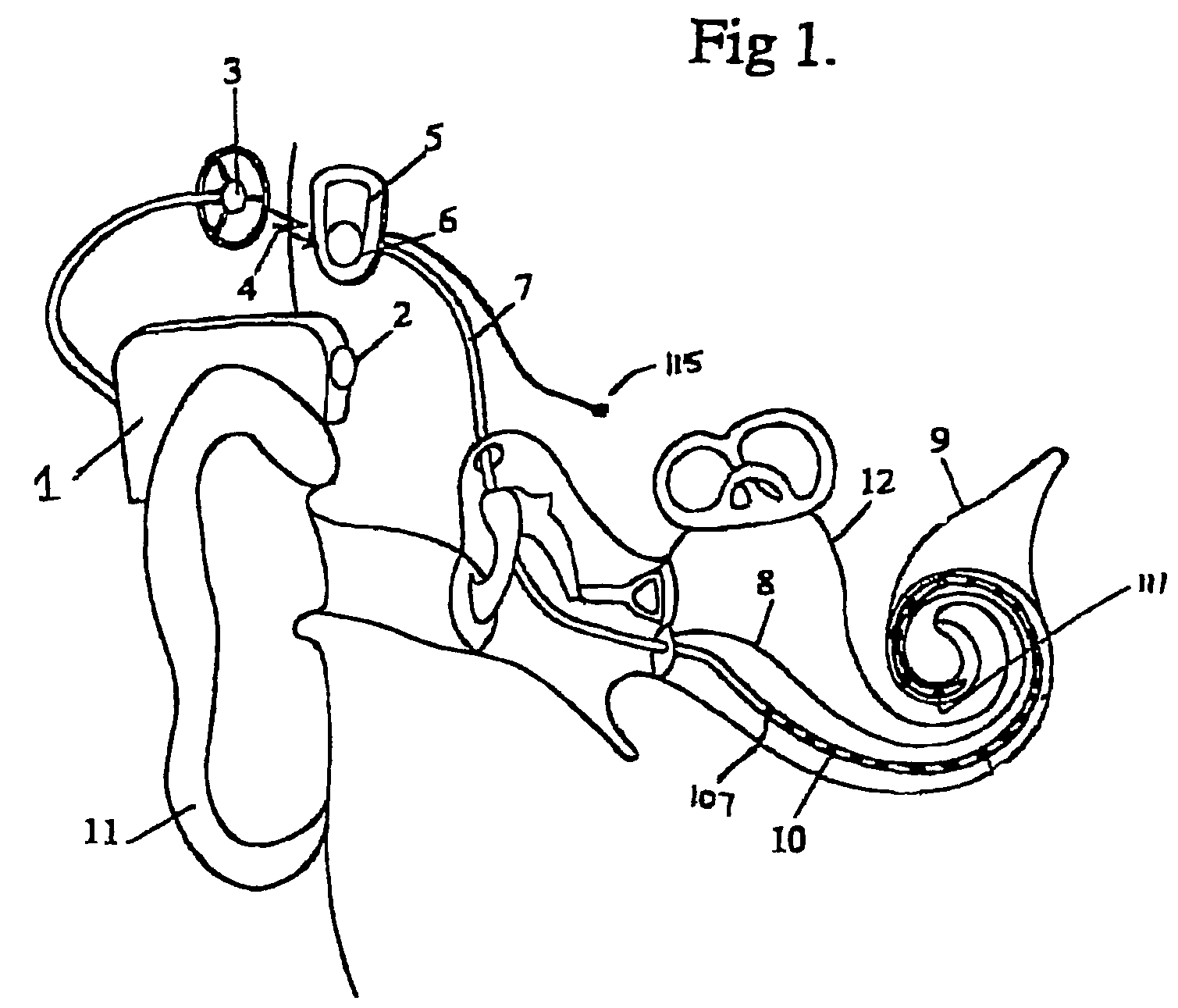Peak-derived timing stimulation strategy for a multi-channel cochlear implant
a cochlear implant and multi-channel technology, applied in the field of multi-channel cochlear implants, can solve the problems of interaural time delays for binaural listening, introduce inconsistent level cues between the two ears, etc., and achieve the effects of improving real-time stimulation, improving temporal accuracy of stimulation, and preserving temporal information in the signal
- Summary
- Abstract
- Description
- Claims
- Application Information
AI Technical Summary
Benefits of technology
Problems solved by technology
Method used
Image
Examples
Embodiment Construction
[0050]With reference to FIG. 1, a typical cochlear implant is shown which consists of an external component including a speech processor 1, and an internal component including an implanted receiver and stimulator unit 6 and an intracochlear array 10. The external component further includes a microphone 2 which is shown integral with the speech processor 1. In this illustration the speech processor is arranged so that it can fit behind the ear with the microphone integral therewith. Alternative versions are also envisaged whereby the speech processor is worn on the body and separately attached to the microphone, and also where the speech processor and microphone are implanted in the patient. The present invention is applicable to all these alternatives and it should also be appreciated that a binaural version of this strategy is also possible and would generally involve two independent units with a microphone behind each ear.
[0051]In such a device or devices, ambient sounds are detec...
PUM
 Login to View More
Login to View More Abstract
Description
Claims
Application Information
 Login to View More
Login to View More - R&D
- Intellectual Property
- Life Sciences
- Materials
- Tech Scout
- Unparalleled Data Quality
- Higher Quality Content
- 60% Fewer Hallucinations
Browse by: Latest US Patents, China's latest patents, Technical Efficacy Thesaurus, Application Domain, Technology Topic, Popular Technical Reports.
© 2025 PatSnap. All rights reserved.Legal|Privacy policy|Modern Slavery Act Transparency Statement|Sitemap|About US| Contact US: help@patsnap.com



